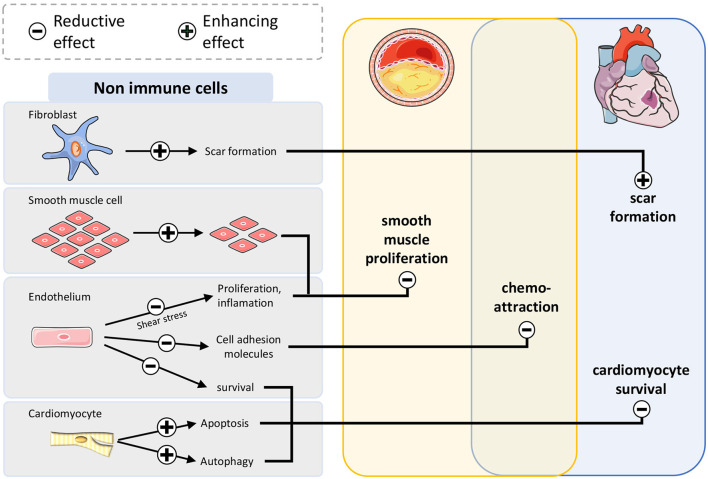Figure 3.
mTOR-inhibition affects atherosclerosis and myocardial infarction by modulation of non-immune cells. Smooth muscle cells proliferate less after mTOR inhibition leading to restrained plaque growth. Survival of endothelium and cardiomyocytes after infarction is impaired, leading to larger infarct size. Suppressive fibroblasts improve scar formation stabilizing the wound after myocardial infarction.

